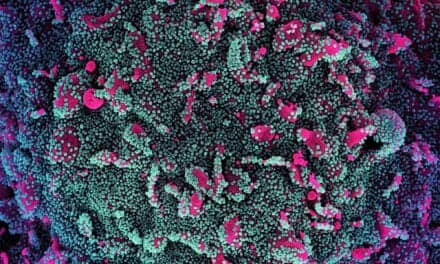Researchers have developed a new method, one they say is effective and faster than the polymerase chain reaction (PCR) test, to detect RNA viruses based on triplex-forming probe technology.
The methodology, created by experts from the University of Barcelona, the Institute for Advanced Chemistry of Catalonia, the Institute of Microelectronics of Barcelona, and the Aragon Nanoscience and Materials Institute of Aragon, opens up new options for detecting viruses such as SARS-CoV-2, influenza A, or respiratory syncytial virus.
An interdisciplinary study on the method was published in the International Journal of Molecular Sciences.
Polypurine hairpins to capture viral RNA
The new methodology is based on the ability of polypurine hairpins (PPRHs) to capture viral RNA and form a high-affinity triplex. When this hybrid structure is connected to a molecular probe and placed in contact with the sample from the affected patient, a detection signal of the viral agent is obtained. The method presented in the scientific publication is called the triplex enhanced nucleic acid detection assay (TENADA).
“PPRHs are unmodified single-stranded DNA hairpins consisting of two specular domains of antiparallel polypurines. These domains, connected to each other by a thymidine loop, are linked by intramolecular reverse-Hoogsteen bonds. The molecular hairpins can bind specifically to polypyrimidine sequences in single-stranded DNA, double-stranded DNA, or RNA viruses via Watson-Crick bonds, thus forming an antiparallel triplex,” says Carlos J. Ciudad, PhD, from the University of Barcelona’s Department of Biochemistry and Physiology, in a press release.
An effective and faster methodology than the PCR test
An advantage in the detection of viral RNA is that the PPRH methodology can be applied without the intervention of reverse transcriptase—the enzyme that converts RNA to DNA—or the thermocycler (the device that amplifies samples of genetic material with the PCR). In addition, it has a sensitivity and specificity equivalent to that of the PCR test and can provide results in less than an hour, according to researchers.
As part of the study, the team used the sandwich hybridization strategy in several biodetection devices. This strategy uses two oligonucleotides: a triplex-forming PPRH hairpin acting as a capture probe and a labeled duplex-forming DNA oligonucleotide acting as a detection probe.
“The triplex-forming PPRH hairpins were designed to bind to SARS-CoV-2 polypyrimidine sequences, while the detection probes were designed as complementary to a region close to the target site of the polypyrimidines. Thus, the presence of SARS-CoV-2 RNA is detected by the formation of the ternary complex on the biosensor’s surface,” says Veronica Noe, PhD, from the Faculty of Pharmacy and Food Sciences and the Institute of Nanoscience and Nanotechnology of the University of Barcelona, in a press release.
This methodology has been implemented in a compact electrochemical device that integrates a two-electrode electrochemical cell on a chip and a fluidic component on paper, and in a thermal lateral flow system implemented in nitrocellulose and using plasmonic nanoparticles and thermal paper.
TENADA: applications in biomedical research
PPRHs are described in the scientific literature as tools for gene silencing of several genes mainly involved in cancer. In addition, they have also been incorporated as probes in biosensors for the detection of small RNA molecules to determine DNA methylation status and for the diagnosis of pneumonia caused by the fungus Pneumocystis jirovecii.
Now, the new TENADA methodology proves to be effective not only in the detection of viral particles, but also the high affinity of PPRHs for viral RNA is a property that can be applied to inhibit the virus replication process. For this reason, the antiviral properties of the polypurine hairpin clips CC1PPRH and CC2PPRH in cells of the VeroE6 lineage infected with SARS-CoV-2 virions are now also being studied.
The work has been the basis of a technology that was patented and licensed in July 2022 through the participation of the University of Barcelona Patent Centre, the Spanish National Research Council, and the CIBER of Bioengineering, Biomaterials, and Nanomedicine.
The patent has been licensed on a nonexclusive basis to the Spanish company Nanoinmunotech through the management of the Bosch i Gimpera Foundation in the process of protecting the technology and the company’s licensing agreement.










